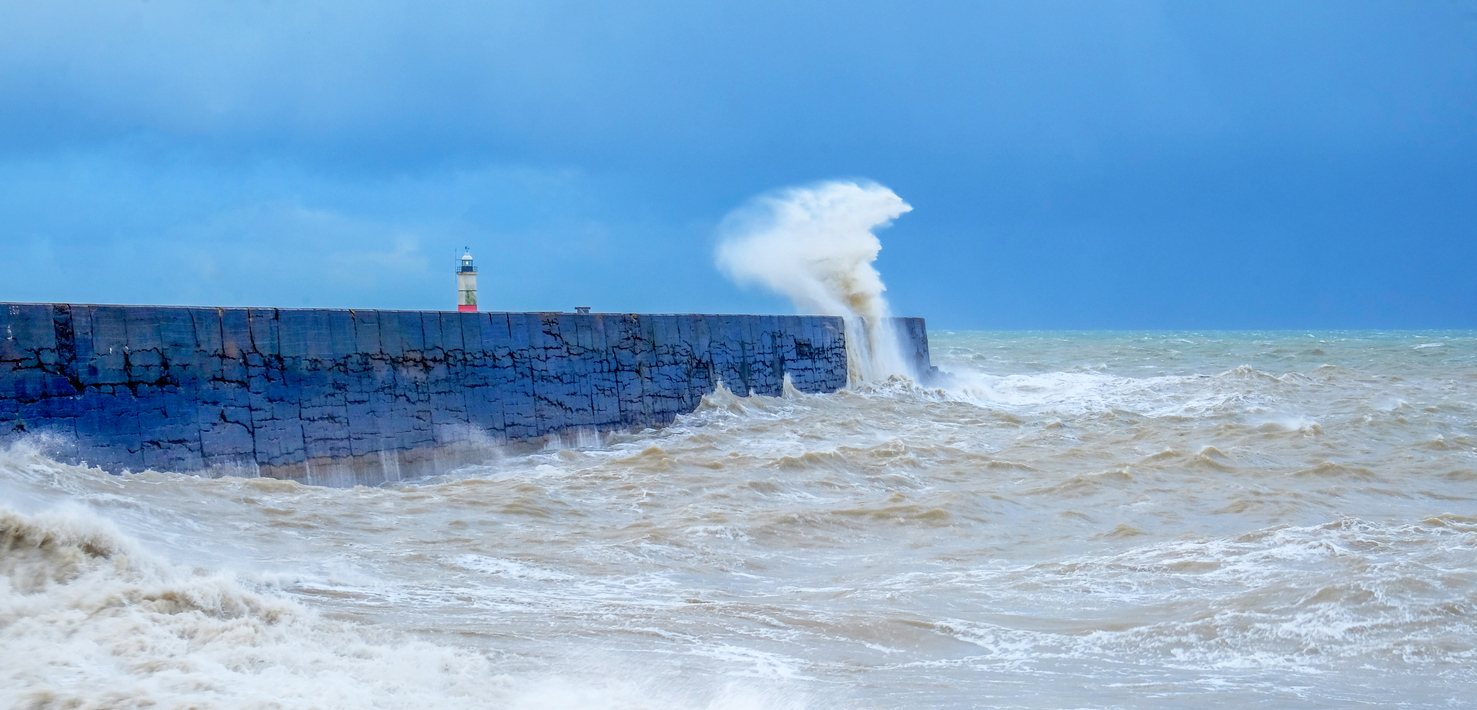According to a NASA study, sea levels are likely rising faster than previously thought, which means that low-lying coastal cities in the United States may flood far more frequently in the coming decades.
The study, which analyzed three decades of satellite data, shows that sea levels along the contiguous United States’ coastlines could rise as much as 12 inches (30 centimeters) above current waterlines by 2050, the research team said in a statement (opens in new tab). According to the study, published Oct. 6 in the journal Communications Earth & Environment, the Gulf Coast and Southeast are expected to be the most severely impacted, with increased storm and tidal flooding in the near future (opens in new tab).
The findings back up the “higher-range” scenarios outlined in the multi-agency Sea Level Rise Technical Report released in February (opens in new tab). According to the report, “significant sea level rise” is expected to hit US coasts within the next 30 years, with 10 to 14 inches (25 to 35 cm) of rise on average for the East Coast, 14 to 18 inches (35 to 45 cm) for the Gulf Coast, and 4 to 8 inches (10 to 20 cm) for the West Coast.”
The NASA study expanded on methods used in the previous multi-agency report, and was led by a team of researchers and scientists based at the Jet Propulsion Laboratory in California, which is dedicated to both exploring the deepest recesses of space and using satellites to “advance understanding” of Earth.
NASA’s study used satellite altimeter measurements of sea surface height and correlated them with tide gauge records from the National Oceanic and Atmospheric Administration (NOAA) dating back over 100 years. As a result, NASA can confidently state that its satellite readings are not anomalous and are fully supported by ground-based findings.
While the findings of the new study are undoubtedly concerning, Jonathan Overpeck, an interdisciplinary climate scientist at the University of Michigan who was not involved in the research, suggested that the projections did not come out of nowhere.
“NASA’s findings appear solid and unsurprising.” “We know that sea level rise is accelerating, and we know why,” he wrote in an email to Live Science. “More and more polar ice is melting, on top of the oceans warming and expanding.” Clearly, sea level rise will worsen as long as we ignore climate change.”
David Holland, a physical climate scientist and professor of mathematics at New York University who was not involved in the study, agrees. “The quality of the satellite data is excellent, so the findings are reliable,” Holland wrote in an email to Live Science. “The study demonstrates that the global ocean is rising, and that the rise is accelerating.” The projected rise for the Gulf coast of about 1 foot by 2050 is enormous, and it has the potential to make hurricane-related storm surges even worse than they are now.”
Other factors may also play a role in rising sea levels along the United States’ coastline. According to the study, by the mid-2030s, the issues associated with rising sea levels could be “amplified by natural variations on Earth,” such as the effects of El Nio and La Nia, with every U.S. coast set to experience “more intense high-tide floods due to a wobble in the moon’s orbit that occurs every 18.6 years.”
El Nio — a warming of surface temperatures in the Pacific Ocean near South America that can lead to increased rainfall — and La Nia — a cooling of surface ocean waters in the Pacific — can make accurately forecasting sea level rise difficult, and can potentially skew readings. Ben Hamlington, the NASA Sea Level Change Team’s leader, noted that natural events and phenomena must always be taken into account, and that all forecasts will inevitably be refined as satellites collect data over time.
Despite the study’s bleak findings, some experts are optimistic that high-profile, impactful research like this will compel decision-makers to focus on addressing the ongoing climate crisis and encourage the public to demand effective measures be implemented.
“It is impossible to dismiss. “I believe that this [increased flooding] is catalyzing action because many coastal communities are discussing these issues and how they will respond,” said Robert Nicholls, director of the Tyndall Centre for Climate Change Research in the United Kingdom, who was not involved in the study. “We have the means to address this challenge in terms of mitigation to stabilize global temperatures and slow — but not completely stop — sea level rise, which will unfortunately continue for centuries due to the warming we have already experienced.”
Finally, as climate change alters our planet’s oceans and seas, humanity will need to adapt.
“This could involve retreat in some places, raising land in others, and defenses in others,” Nicholls explained to Live Science. “There is no single solution that will work everywhere.” If we continue on this path, the future will be manageable. Likewise, if governments and society ignore these issues, the future will be a complete disaster.”












